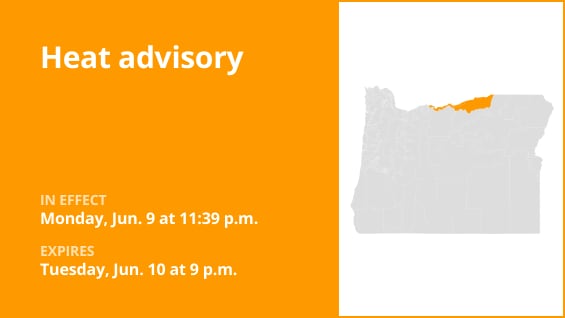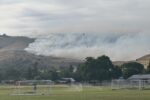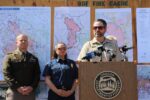The National Weather Service released an updated heat advisory at 11:39 p.m. on Monday in effect until Tuesday at 9 p.m. for Eastern Columbia River Gorge of Oregon and Lower Columbia Basin of Oregon.
The weather service adds, “Hot conditions with high temperatures between 95 – 102 degrees expected with overnight lows of 60 – 70 degrees. This will pose a moderate to locally major risk of heat-related illness.”
“Hot temperatures may cause heat illnesses. Heat will significantly increase the risk of heat-related illnesses for those who are sensitive to heat, especially those without effective cooling or adequate hydration,” comments the weather service.
Beating the heat: Heat safety guidelines from the weather service
-
Stay hydrated:
Drink plenty of fluids. -
Seek shelter:
Stay in an air-conditioned room. -
Avoid sun exposure:
Avoid direct sun exposure, protect yourself and check on vulnerable relatives and neighbors. -
Child and pet safety:
Exercise vigilance when it comes to young children and pets. Never leave them unattended in vehicles during high temperatures, as car interiors can quickly become dangerously hot. -
Caution outdoors:
Take extra precautions if you work or spend time outside. -
Time your activities wisely:
If possible, move strenuous activities to early morning or evening for more favorable conditions. -
Recognize heat-related issues:
Know how to recognize the signs and symptoms of heat exhaustion and heat stroke. -
Stay cool with clothing:
Wear lightweight, loose-fitting clothing to stay comfortable.
Additional tips for outdoor workers:
- For outdoor workers, the Occupational Safety and Health Administration (OSHA) recommends regular rest breaks in shaded or air-conditioned areas.
- If someone is overwhelmed by the heat, swiftly relocate them to a cool, shaded location.
- In emergency situations, dial 911 for immediate assistance.
These NWS heat safety recommendations are vital for your well-being during periods of high temperatures. Stay informed and take the necessary steps to protect yourself and others from the heat’s potentially dangerous effects.
Advance Local Weather Alerts is a service provided by United Robots, which uses machine learning to compile the latest data from the National Weather Service.
Beating the heat: Heat safety guidelines from the weather service
-
Stay hydrated:
Drink plenty of fluids.
-
Seek shelter:
Stay in an air-conditioned room.
-
Avoid sun exposure:
Avoid direct sun exposure, protect yourself and check on vulnerable relatives and neighbors.
-
Child and pet safety:
Exercise vigilance when it comes to young children and pets. Never leave them unattended in vehicles during high temperatures, as car interiors can quickly become dangerously hot.
-
Caution outdoors:
Take extra precautions if you work or spend time outside.
-
Time your activities wisely:
If possible, move strenuous activities to early morning or evening for more favorable conditions.
-
Recognize heat-related issues:
Know how to recognize the signs and symptoms of heat exhaustion and heat stroke.
-
Stay cool with clothing:
Wear lightweight, loose-fitting clothing to stay comfortable.
Additional tips for outdoor workers:
-
For outdoor workers, the Occupational Safety and Health Administration (OSHA) recommends regular rest breaks in shaded or air-conditioned areas.
-
If someone is overwhelmed by the heat, swiftly relocate them to a cool, shaded location.
-
In emergency situations, dial 911 for immediate assistance.
These NWS heat safety recommendations are vital for your well-being during periods of high temperatures. Stay informed and take the necessary steps to protect yourself and others from the heat’s potentially dangerous effects.
Advance Local Weather Alerts is a service provided by United Robots, which uses machine learning to compile the latest data from the National Weather Service.





More Stories
Update: Heat advisory issued for Eastern Columbia River Gorge of Oregon and Lower Columbia Basin of Oregon
Update: Heat advisory issued for Eastern Columbia River Gorge of Oregon and Lower Columbia Basin of Oregon
Update: Heat advisory issued for Eastern Columbia River Gorge of Oregon and Lower Columbia Basin of Oregon